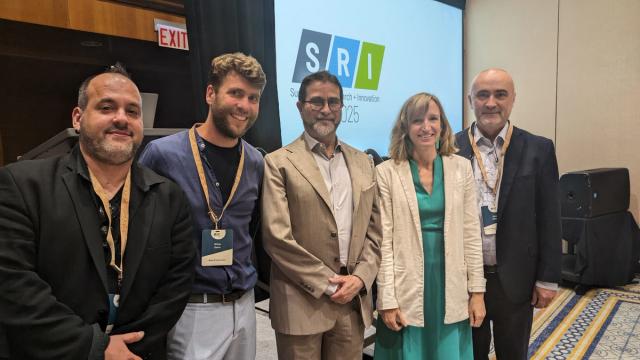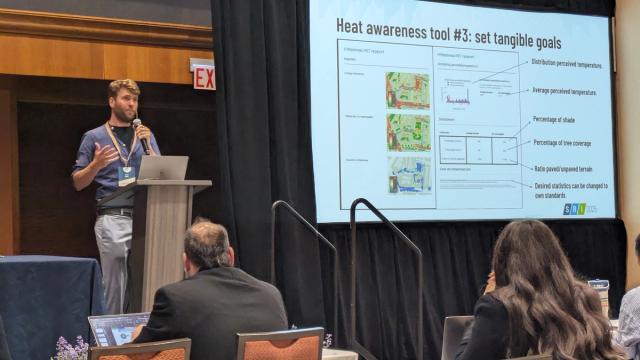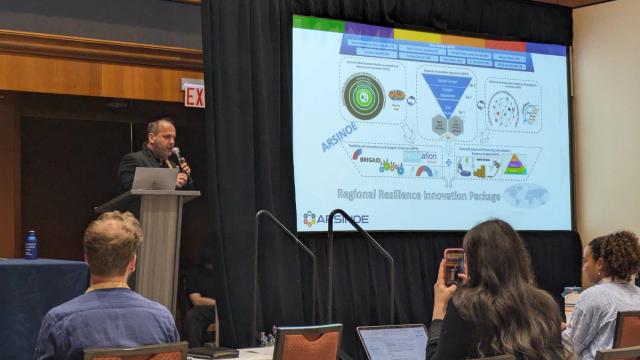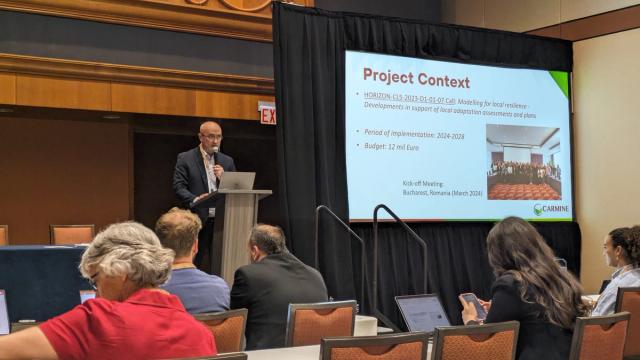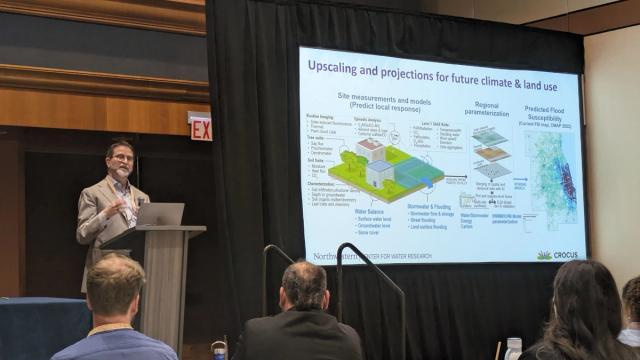Innovating for Resilience: Insights from “Pathways to Climate Resilience Session” at SRI 2025
On June 16 to 19, 2025, the Sustainability Research and Innovation (SRI) Congress took place in Chicago, Illinois, marking its fifth anniversary and the first Congress in North America.
The SRI Congress highlights actionable, inclusive, and evidence-based approaches to climate change. As Lead Partner, the UN Sustainable Development Solutions Network (SDSN) organized several sessions, including “Pathways to Climate Resilience: Innovative Adaptation Strategies for a Sustainable Future”.
Pathways to Climate Resilience
Focusing on practical responses to the climate crisis, the session presented innovative climate adaptation initiatives from the EU-funded ARSINOE, CARMINE, and IMPETUS projects. All three projects contribute to the EU Mission on Adaptation to Climate Change, one of five large-scale initiatives funded by the Horizon Europe research program tackling major societal challenges.
The session, moderated by Maria Cortes-Puch, Vice President of the SDSN, featured a panel presentation and discussion with four distinguished speakers:
- Dr. Sorin Cheval, Project Coordinator for the CARMINE project and Senior Climatologist at the National Meteorological Administration of Romania
- Wisse Beets, an expert on climate-resilient cities for the Dutch firm Nelen & Schuurmans
- Dr. Conrad Landis, a Post-Doc Researcher at the Research Laboratory on Socio-Economic and Environmental Sustainability of Athens University of Economics and Business (AUEB)
- Dr. Aaron Packman, Professor of Civil and Environmental Engineering at Northwestern University and Co-Director of the Northwestern Center for Water Research and the U.S.-Israel Collaborative Water-Energy Research Center
The presentations ranged from sustainable finance models to the role of urban green spaces, but all underscored the importance of practical, scalable solutions to strengthen climate resilience.
The CARMINE Project
Sorin Cheval presented the CARMINE project, an initiative designed to strengthen climate-resilient development in Europe’s metropolitan regions. Its goal is to support informed decision-making across governance levels by integrating both traditional and nature-based solutions (NbS). With a 2030–2035 implementation horizon and long-term vision to 2050, CARMINE brings together 32 partners from 11 countries, spanning science, policy, communities, and local authorities.
At the project’s core are Living Labs (LLs) and Digital Twins (DTs) established across eight European case study areas. Living Labs serve as collaborative spaces for stakeholders to co-design and evaluate adaptation strategies, while Digital Twins simulate real-time climate risks and interventions tailored to each metropolitan context.
Leveraging high-resolution models and AI, the project addresses key hazards such as urban heat, drought, water scarcity, flooding, and wildfire. Its outputs take the form of impact-based roadmaps, spatial plans, and scenario narratives. Fully aligned with the EU Climate Adaptation Mission and contributing to Climate-ADAPT, CARMINE places a strong emphasis on inclusivity, ensuring vulnerable communities are actively engaged in the eight LLs. More than a research effort, CARMINE represents a transformative model that fuses science, technology, and stakeholder insight to build resilient, future-ready European cities and metropolitan regions.
Heat Stress Decision Tool
Wisse Beets of Nelen & Schuurmans presented a practical and innovative web-based application, developed within the IMPETUS project, to support the design of heat-proof cities. The tool identifies heat stress hotspots within cities and enables users to design and evaluate adaptation measures in an interactive, game-like interface. This enables municipalities, architects, urban planners, and citizens to explore how different planning choices affect experienced heat stress.
Key factors such as the amount and placement of trees, bodies of water, buildings, and different pavement types significantly influence the heat island effect and perceived temperatures. By using the tool, stakeholders can assess how many and which measures are needed to achieve a city’s adaptation goals for a specific area. Thanks to import and export functions, the tool also generates other valuable insights, such as identifying vulnerable population groups and locations where cooling or shade is desired (playgrounds, hospitals).
Already adopted by more than ten municipalities in the Netherlands, the tool can easily be adapted for use in other countries and domains. Beets also briefly highlighted the development of a hydrological model, 3Di, which applies the same methodology: advanced climate calculations, in this case, flooding, made accessible for a broad group of stakeholders.
Hybrid Financial-Sustainability Model
Conrad Landis presented the Hybrid Financial-Sustainability Model, developed within the ARSINOE project, to monitor short-term and long-term Environmental, Social, and Governance (ESG) targets. Conceived by AUEB, the model integrates sustainability and financial metrics to measure certain Key Performance Indicators (KPIs) across critical ESG areas such as water-use, labor conditions, and responsible investment.
The model supports the evaluation of SDG performance both at the company level and across the wider value chain. Its first application took place in the ARSINOE Mediterranean Ports Case Study, where 188 sustainability and financial KPIs were identified across 13 material issues, mapped to ESG and SDG goals, and benchmarked against top global port authorities.
Resilient Urban Landscapes
Aaron Packman from Northwestern University presented the work of the CROCUS Urban Integrated Field Laboratory, which investigates different types of urban green spaces on flooding and water movement. CROCUS applies multi-scale observational science to inform solutions to extreme weather challenges.
To address urban flooding, CROCUS monitored 10 green spaces across north-south and inland-to-lakeshore gradients in the Chicago metropolitan area, collecting frequent and consistent measurements of water levels, soil moisture, energy fluxes, and transpiration. These data, combined with local climate and hydrology simulations, provide insight into the interactions between local land cover, engineered infrastructure, and underlying soil in stormwater response and flooding.
In highly developed cities such as Chicago, small and fragmented green spaces like parks, school campuses, and restored natural areas play an important role in allowing water to soak into the shallow ground. Despite Chicago’s extremely shallow groundwater table as a Great Lakes coastal city, distributed green space absorbs substantial amounts of stormwater. Expanding green spaces and creating green corridors can therefore help reduce flooding frequency. These findings advance understanding of Earth system extremes, while also informing future strategies to enhance economic prosperity, human health, and infrastructure resilience in large cities.
Overall, the “Pathways to Climate Resilience” session emphasized the critical role of data-driven tools and modeling techniques in enhancing climate resilience across metropolitan regions. Future efforts will prioritize adapting these tools for scalability and adaptability, promoting deeper public-private collaborations to bridge gaps and support effective local implementation.
Learn more about the ARSINOE, CARMINE, IMPETUS, and CROCUS projects.
